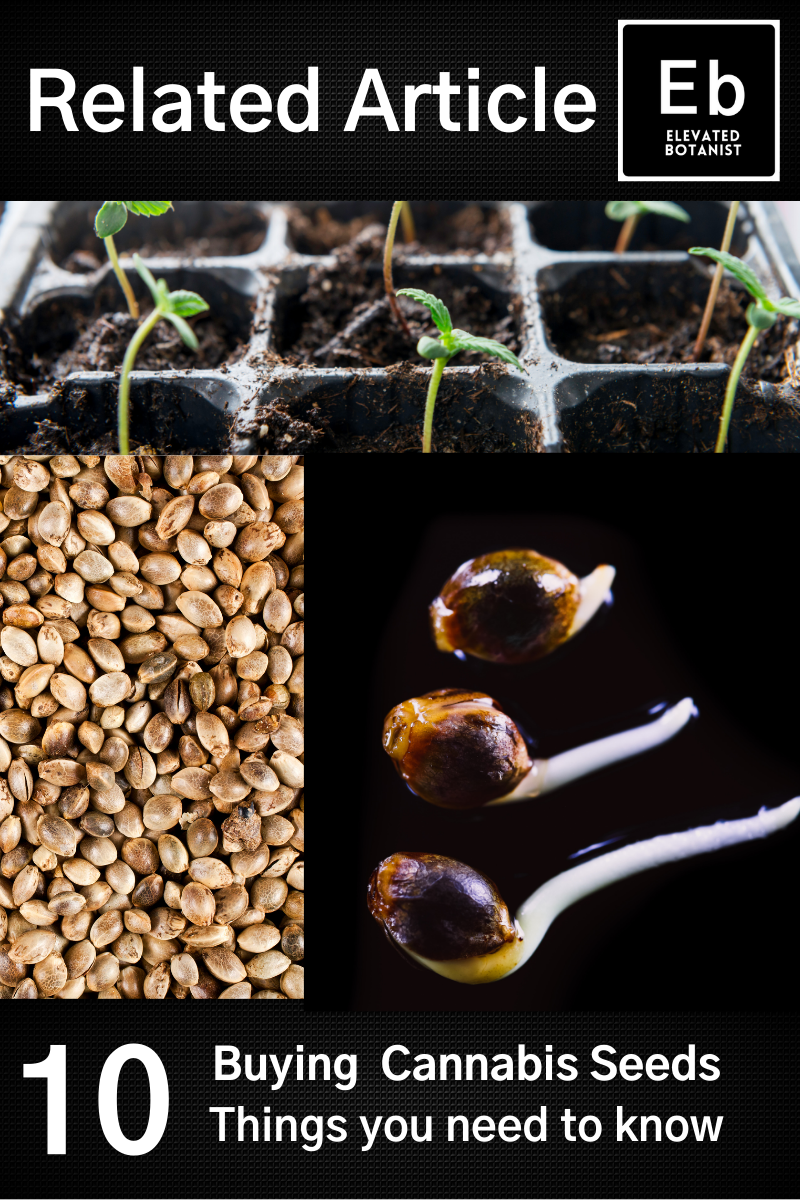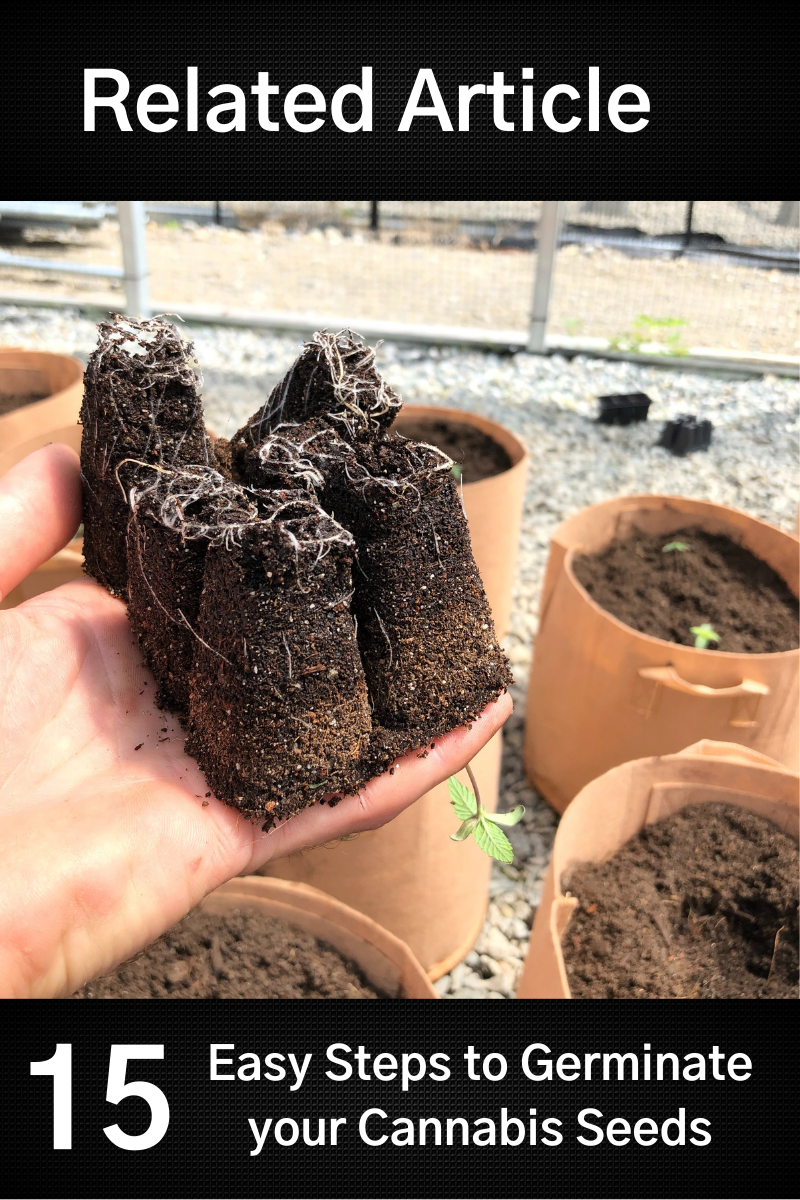Find the Perfect Spot for Your Cannabis Garden
Growing cannabis is awesome. You don’t need to partake in the herb to appreciate the joy of growing this vigorous plant, and friends are usually eager to help at harvest time.
Cannabis has been a feature of my family garden for many years and is integrated into rotation with our food crops. It took a few seasons for us to figure out the perfect spot in our garden where cannabis would grow like a weed. I can break it down for you in the next few minutes.
Cannabis Site Selection Basics
Site Security
Solar Exposure
Photoperiod Considerations
Container Gardens
Raised Beds
Cannabis Trellis
Crop Rotation
Cover Crops
Companion Planting
Site Security
Unfortunately, cannabis is more vulnerable to theft than broccoli, and site security needs to be considered when planning a cannabis garden.
A fenced site can be helpful in this regard, and a secret garden is always more secure. Cannabis is a vigorous plant and can grow to 10 feet tall in just a few months, a good fact to keep in mind when locating your garden. Plants can be topped to control their height, or planted out later in the season, so they do not overgrow their welcome.
Solar Exposure
Cannabis is a light loving plant and has evolved to grow to its full potential under direct sunlight.
For outdoor growers, optimizing light conditions involves choosing a site with ideal solar exposure. There are two primary factors that you must consider when assessing solar exposure. These factors are light duration and start of day.
The duration of direct light at your location will affect the quality and yield of your Cannabis harvest. A minimum of 8 hours of direct sunlight is recommended. The start of day is important for plant health. If you have direct sunlight on your crop as early as possible in the day, the dew will quickly evaporate. If this dew persists until mid-morning, you crop is more likely to rot.
There’s an app for that
After many years of looking at compasses, calculating solar south, and basically guessing at my site’s solar orientation, I finally bought an app, about 5 years ago, and I haven’t looked back.
The SunSeeker app (they are not paying me) shows me the solar path at any time of year at my grow site.
By using the camera to visualize site conditions I can find the best location for my plants.
The yellow line is the solar path on my proposed harvest day (September 15)
The photoperiod duration for any day of the year is calculated for my site.
Photoperiod Considerations
Your plant’s photoperiod is the duration of light, and darkness it receives each day. Unless you live very near the equator, the daylength changes slowly throughout the year.
Cannabis plants have evolved the ability to determine day-length so that they can create flowers and set seeds before winter conditions occur. Different types of Cannabis Plants have different Photoperiod requirements.
Sourcing quality seeds that suit your site conditions is critical to your gardens success.
Short-Day Plants
Most cannabis plants are short-day plants. This means that they will continue to grow vegetatively, until exposed to long nights.
Once the plant perceives that the dark period has exceeded a certain length, the plant will begin to flower.
It is important to avoid light pollution during the night-cycle to ensure that flowering is uninterrupted.
While low levels of light (moonlight) will not affect the cannabis photoperiod, areas that can be directly illuminated with security lights or streetlights should be avoided.
Autoflower Cannabis
Autoflowering cannabis plants are not short-day plants. They are day-neutral and have evolved the ability to flower independent of day length as an adaptation to the early winters of northern climates.
This trait can be very useful to outdoor growers, as it allows us to flower plants outdoors all summer, regardless of the photoperiod. Autoflowers are a good choice for locations where light pollution during the skotoperiod (dark period) cannot be avoided.
Container Gardens
For patio grows, and small urban gardens, container culture is great. Container gardens are more labor intensive than growing in beds due to the more frequent irrigation that is required.
A minimum of 5 gallons of soil is recommended for outdoor plants, but 10 gallons is better. Black plastic pots can get very hot in direct sunlight, so it is a good idea to use a light-colored pot cover to keep the roots from cooking.
The great thing about containers is that you can move them, and during rainy weather, they can even become houseplants. Dedicated growers have been known to move plants indoors nightly for a few weeks to initiate flowering by shortening the natural photoperiod.
As your plant gets bigger, you may need to consider anchoring the pot to prevent it blowing over. Bamboo or metal stakes can be driven into the ground to form a trellis to support your growing plant.
Raised Beds
On this farm, we grow our herb in raised beds. This allows for the soil to warm up quickly in the spring and makes irrigation easy.
Drip lines provide ideal watering, and a heavy mulch layer keeps our root zone happy.
Remember to give your plants plenty of space. Here in beautiful BC, Canada, we usually space our plants about five feet apart, but if you are growing Cali Trees, you might need ten feet between plants.
Autos are generally smaller plants, and three foot spacing should be plenty.
Cannabis Trellis
After a summer of love, your plants will be huge. The heavy colas will need some form of trellis support to keep them from blowing over. This is easier to achieve when you have a windbreak to protect your precious flowers.
A fence or hedge will serve you well. We often use cattle fencing to trellis our cucumbers, and this performs double duty to shelter the ladies from late summer storms.
Crop Rotation
It can be helpful to change planting locations of specific crops from season to season. This helps to suppress soil borne diseases and maintain plant health.
We like to grow cannabis in beds where garlic was grown the year before. Garlic is in the allium family, and will generally benefit crops which follow it in rotation. Garlic also helps to fix soil Sulfur. Sulfur is a primary building block of terpenes which contribute to our favorite plants smell and effect.
Cover Crops
After our Garlic is harvested, we will establish a cover crop to nurture the soil over the winter.
We like to use legumes for their ability to fix atmospheric nitrogen into the soil. Cover crops can be selected that will be winter killed or can be tilled into the soil.
Soil should never be left bare and exposed to the elements. When crops are not growing, a heavy mulch or geotextile layer should be applied to protect your fertile soil.
Companion Planting
Companion planting involves growing plants in close proximity for their mutual benefit.
Two of our favorite species to grow in our cannabis garden are nasturtiums, and marigolds. We love these plants for their beautiful flowers, and for their pest control attributes. Marigolds produce biochemicals which suppress nematodes and other cannabis pests. Nasturtiums are known to attract hoverflies which are aphid predators.
Members of the brassica (cabbage) family are generally not great companions for cannabis crops as they can attract loopers and other cannabis pests. In hot-dry climates, bean plants should also be avoided, as this is the preferred host plant for spider mites. Squash plants are very susceptible to Powdery Mildew, but don’t worry, this disease is host specific, and the PM that infects squash cannot attack your cannabis plants.
Conclusion
Cannabis is an easy plant to grow.
Starting out with great genetics in the form of seeds, and selecting the perfect spot in the garden are two important factors that will contribute to your success.
If you haven’t planned your garden yet, now is the time to start. I am happy to provide all the information that you will need to grow amazing cannabis.
The articles here in the Grow Basics series are written for you.
If there is anything you need to know and you don’t see it here, please drop me an email and I will fill you in on the details.
Everything starts with a seed, start learning how to germinate like a pro in this article.





